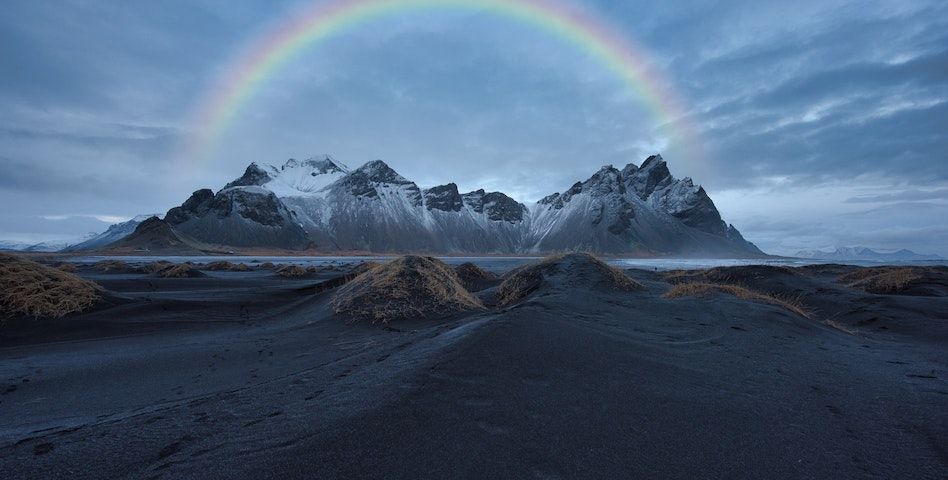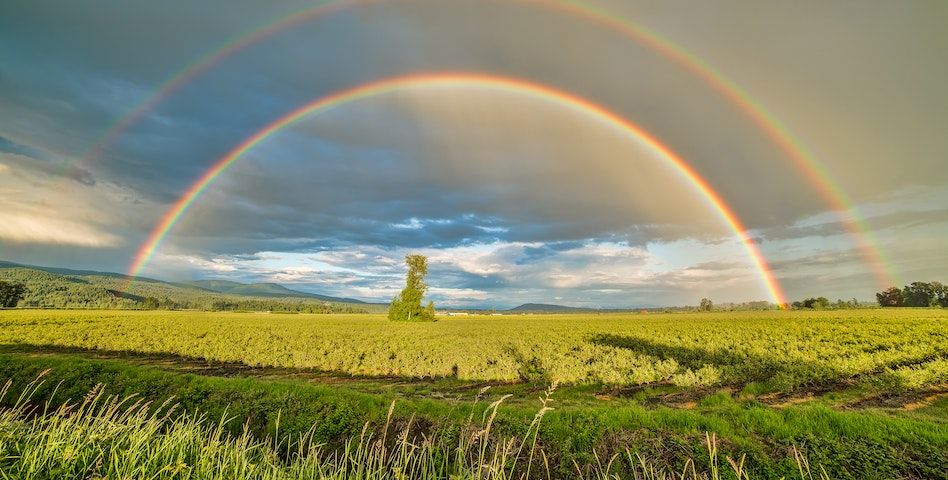How is a Rainbow Formed?
Rainbows are one of the most enchanting natural phenomena, captivating people of all ages with their vibrant and ethereal beauty. They grace the sky after a rain shower, casting a colorful arc that seems almost magical. But have you ever wondered how a rainbow is formed? In this blog, we'll dive into the science behind this natural spectacle and unveil the secrets of rainbow formation.
The Prismatic Effect of Raindrops
At its core, a rainbow is a meteorological optical phenomenon caused by the interaction of sunlight with raindrops in the atmosphere. The process begins when sunlight, which appears to the human eye as white light, passes through the myriad of raindrops suspended in the air. These raindrops act as tiny prisms, refracting and dispersing the incoming sunlight into its constituent colors.

Dispersion: Splitting Light into Colors
The key principle behind the formation of a rainbow is the dispersion of light. Dispersion occurs because different colors of light are bent or refracted by varying amounts as they pass through the water droplets. This bending of light depends on the wavelength of each color. When sunlight enters a raindrop, it slows down and bends, causing the different colors within the light spectrum to spread out.
The Sequence of Colors
As sunlight passes through a raindrop, it undergoes dispersion, separating into its individual colors. The sequence of colors in a rainbow, from the outermost to the innermost, is typically red, orange, yellow, green, blue, indigo, and violet. This sequence is a result of the varying degrees of bending and dispersion that each color experiences within the raindrop.
Internal Reflection and Refraction
In addition to dispersion, internal reflection and refraction are crucial processes in rainbow formation. As sunlight enters a raindrop, it not only bends but also undergoes internal reflection off the inner surface of the droplet. This internal reflection causes the light to change direction once again as it exits the raindrop.
The Shape of a Rainbow
The shape of a rainbow is a semicircle, with its center located opposite the direction of the sun. This semicircular shape occurs because the interaction between sunlight and raindrops creates a cone of light. When this cone of light intersects the observer's line of sight, a circular or semicircular rainbow appears.
Double Rainbows: A Secondary Phenomenon
Sometimes, if the raindrops are particularly small and spherical, you may witness a double rainbow. This secondary rainbow is fainter than the primary rainbow and appears above it. The colors in a double rainbow are reversed, with the sequence of colors in the secondary rainbow being violet, indigo, blue, green, yellow, orange, and red.
The Role of Raindrop Size
The size of raindrops plays a crucial role in determining the brightness and visibility of a rainbow. Larger raindrops produce more vivid rainbows with well-defined colors, while smaller droplets yield fainter, less distinct rainbows. The size distribution of raindrops in the atmosphere influences the quality of the rainbow observed.

The Angle of Refraction
The angle at which light exits the raindrop also affects the formation of a rainbow. For a rainbow to be visible to an observer on the ground, the angle between the incoming sunlight, the refracted light, and the observer's line of sight must be approximately 42 degrees. This angle is the result of the complex interplay between the bending, dispersion, and internal reflection of light within the raindrop.
Other Factors Influencing Rainbow Formation
While sunlight and raindrops are the primary factors in rainbow formation, other elements can influence the appearance of rainbows. These include the presence of water droplets or spray in the air, such as from waterfalls or fountains, which can create smaller, more ephemeral rainbows. Additionally, the altitude of the observer and the size of the raindrops can affect the size and intensity of the rainbow.
The Symbolism of Rainbows
Beyond their scientific marvel, rainbows hold a special place in human culture and symbolism. Throughout history, rainbows have been seen as symbols of hope, renewal, and transformation. In various mythologies and religions, rainbows are often associated with divine messages or bridges between the earthly and spiritual realms. This symbolism adds to the fascination and wonder that rainbows evoke in people worldwide.

Conclusion
In conclusion, a rainbow is a breathtaking natural phenomenon that occurs when sunlight interacts with raindrops in the atmosphere. The dispersion, refraction, and internal reflection of light within these raindrops create the stunning spectrum of colors that we see in a rainbow. Understanding the science behind rainbow formation enhances our appreciation of this captivating spectacle that has inspired awe and wonder throughout human history. So, the next time you witness a rainbow arching across the sky, you can marvel not only at its beauty but also at the intricate physics and optics that make it possible.